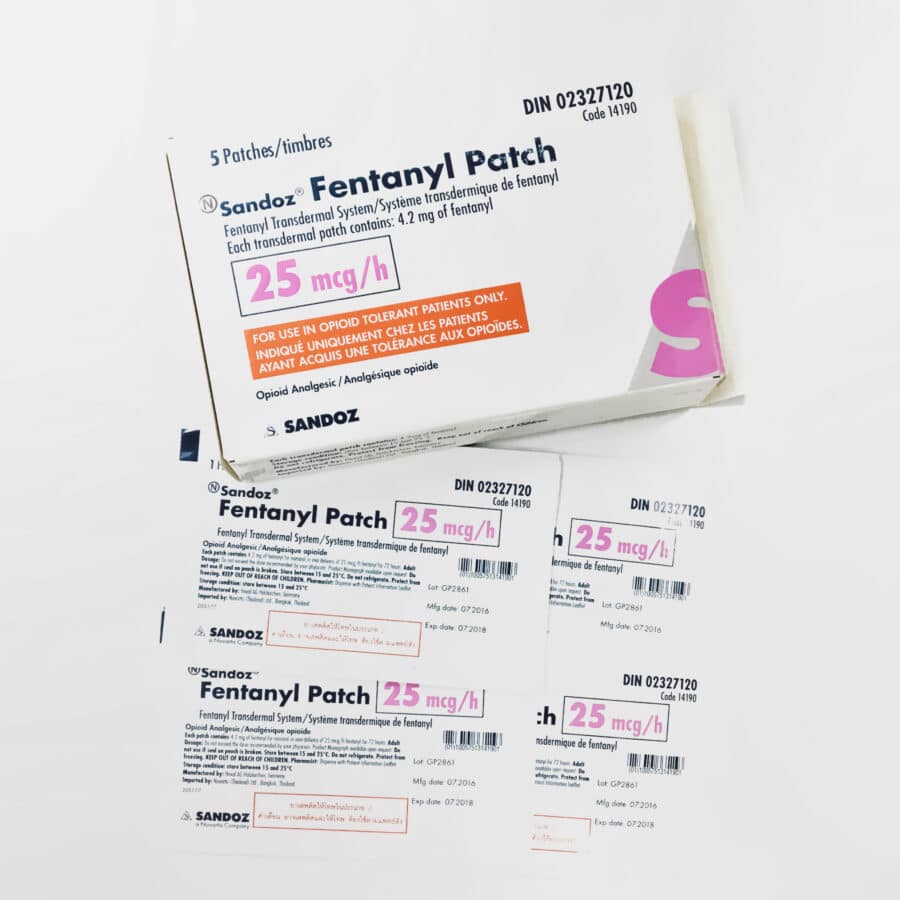Throughout the past decade, numerous manufacturers have been forced to recall fentanyl patch products because of a host of adverse side effects. These side effects include possible overdose and major respiratory issues, which have sometimes proven fatal.
Fentanyl is a prescription pain reliever that can be administered through a skin patch, injection into a vein, or orally in the form of a table. One fentanyl patch is usually designed to provide two to three days of medicine and pain relief at varying levels.
Fentanyl was developed to reduce sensations of pain, as well as some of the emotional reactions to aches, by interfering with receptors of the spinal cord and brain. These patches are usually used for severe pain, often as a last resort after other pain relievers have failed.
However, fentanyl patches can cause numerous side effects. The most common side effects include dry mouth, drowsiness, euphoria, and skin reaction. Additionally, incorrect use of the patches can create more severe issues like difficulty breathing and even death.
According to FDA reports dating back to 2005, “directions on the product label and on the patient package should be followed exactly to avoid overdose.” The FDA has issued numerous warnings, continuing in 2007, with further notice to manufacturers and consumers about the risks of fentanyl patches. The 2005 FDA warning explained that fentanyl patches were only for people who were opoid-tolerant and have chronic pain that cannot be controlled by other medicines.
After the 2005 warning from the FDA, an Associated Press article reported a recall of fentanyl patches because of a problem that caused some patients and caregivers to overdose on the drug. According to the AP report, some of the patches from pharmaceutical maker Duragesic came with a cut within the lining where the drug is stored in gel form. The article claimed that, in cases where the gel escaped, the powerful drug could come into direct contact with a patient or caregiver, putting them at severe risk of overdose. According to that AP report, the manufacturer estimated “that two patches out of every million included in the recall have the defect that causes the leak.”
Supporting previous reports of problems with the patches, Bloomberg News reported in late 2008 that Johnson & Johnson had been found liable in multiple lawsuits involving fentanyl. The report stated that in 2007 and 2008 families whose loved ones had fatally overdosed while using the fentanyl patches received verdicts between $5 million and $17 million against consumer product giant Johnson & Johnson.
If you or a loved one has experienced serious side effects or overdose from the use of fentanyl pain patches, contact Newsome Law Firm and fill out a case evaluation form today. Our team of attorneys has experience specific to complications associated with prescription medication. Not only can they give you the legal guidance you need, they can help you get the compensation you deserve.
References:
Food and Drug Administration. (July 8, 2005) “Safety Alerts for Human Medical Products: Duragesic (fentanyl transdermal system).” Retrieved on June 7, 2011 from the FDA.
Harris, Andrew. (November 17, 2008) “J&J Units Must Pay $16.6 million for Pain-Patch Death.” Retrieved on June 7, 2011 from Bloomberg News.
Metzler, Natasha. (February 13, 2008) “Fentanyl Painkiller Patches Recalled.” Retrieved on June 7, 2011 from USA Today.


